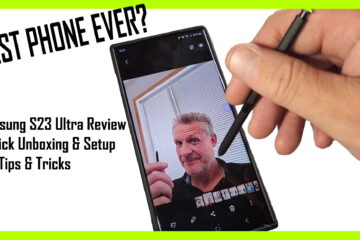Below is a list of the common cell phone acronyms, their meaning and a brief description in plain english. Note that each line is hyperlinked to a webpage to provide more detail, if you want it 🙂
| CODE | MEANING | SIMPLE DESCRIPTION |
| 1G | First Generation cellular network | analog on FM band just for phone calls |
| 2G | Second Generation cellular network | some digital transmission with basic data using CDMA or GSM |
| 3G | Third Generation cellular network | data and voice on same network using WCDMA & UMTS |
| 4G | Fourth Generation cellular network | 100-200Mb/s internet on cellular – 2018 Standard using LTE & MIMO |
| 5G | Fifth Generation cellular network | 1000Mb/s (gigabit) internet on cellular – early 2020’s using MWMCM |
| AMPS | Advanced Mobile Phone Services | 1G analog mid 19580’s technology allowed calls in one country |
| APN | Access Point Name | the Gateway between cell and non-cell (i.e. land) internet |
| CDMA | Code-Division Multiple Access | 3G technology to simultaneously sending & receiving on the same channel |
| CDMA2000 | Code-Division Multiple Access in Year 2000 | aka C2K – better version of CDMA but still 3G |
| EDGE | Enhanced Data For GSM Evolution | 200kb/s – next generation GSM |
| ESN | Electronic Serial Number | serial number transmistted to cell towers |
| FREEZE | not an acronym | appeas after unlock code wrongly entered too many times |
| GPRS | General Packet Radio Services | 2.5G or 3G technology 56 – 114 Kb/s internet connection |
| GSM | Global System for Mobile communication | 50kb/s popular in Europe using TDMA |
| HSPDA | High Speed Downlink/Uplink Packet Access | 5 – 30MB/s cellular data popular in India sometimes called 3.5G |
| ICCID | Integrated Circuit Card Identifier | SIM card serial number |
| IMEI | International Mobile Equipment Identity | 15 characters |
| LTE | Long Term Evolution | 4G data network with many different iterations inc. LTE2, LTE+, LTE Advanced |
| LTE-A | Long Term Evolution Advanced | wrongly called 5G, just another, faster version of LTE |
| MCK | Master Control Key | Unfreeze Code for Samsung |
| MEID | Mobile Equipment Identifier | global serial number just like IMEI developed by a different organization |
| MIMO | Multiple Input Multiple Output | using more than one connection at the same time |
| MMS | MultiMedia Message Service | sending formatted text or pictures over a cell network – the new SMS |
| MWMCM | Millimeter Wave Mobile Communications, Massive MIMO | 5G – using a lot of connections at the same time |
| NCK | Network Control Key | code to unlock cells |
| OFDM | Orthogonal Frequency Division Multiplexing | a way of combining different streams |
| SIM | Subscriber Identity Module | small chip used to verify identity with cell towers |
| SMS | Short Message Service | plain text messages sent over the voice network – original texing! |
| TDMA | Time Division Multiple Access | 2G & 3G technology competing with CDMA and used inside GSM |
| UDID | Unique Device Identifier | Apple only serial number |
| UMTS | Universal Mobile Telecommunications Service | 3G technology used in GSM to get 2mb/s |
| WCDMA | Wideband Code Division Multiple Access | Faster CDMA but largely incompatible with CDMA replacing GSM |
| WiFi | not an acronym for anything – made up | local wireless networks |
| WiMAX | Worldwide Interoperability for Microwave Access | WiFi like technology that communicates up to 10 Kilometers -Dead? |



1 Comment
How to Find the Best WiFi Channel – Up & Running Technologies, Tech How To's · October 26, 2020 at 8:18 am
[…] to choose from, and depending on which band you are using, you will have a different number of WiFi channels available to you. If you are using the 2.4 GHz band, then you will typically have 11 WiFi […]